There a lot's of species of animals are Poisonous; they are Poisonous because of their defense mechanism. The poisonous animals use their venom to catch the prey and to defend the predators. In fact a small amount of venom of some animal has enough power to kill many of us. Following list contains Top 10 most Poisonous Animals in the world, read on:
Top 10 most Poisonous Animals in the world
1. Box Jelly Fish
Box jellyfish (class Cubozoa) are cnidarian invertebrates distinguished by their cube-shaped medusae. Some species of box jellyfish produce extremely potent venom: Chironex fleckeri, Carukia barnesi and Malo kingi. Stings from these and a few other species in the class are extremely painful and can be fatal to humans. The box jellyfish is the most venomous creature known to mankind. They found in Indo-Pacific region. There have been hundreds of reported fatal attack on humans every year. The cubic shaped jelly fishes have 15 tentacles on each side of their body. These tentacles can reach up to a length of 10 feet. The lengthy tentacles also contain more than 5000 stinging cells. The venom of box jellyfishes will affect the nervous system and the heart. The human victims are likely to die before reaching the shore.
2. The king cobra
King cobra (Ophiophagus hannah) is an elapid found predominantly in forests from India through Southeast Asia. This species is the world's longest venomous snake, with a length up to 18.5 to 18.8 ft (5.6 to 5.7 m). It preys chiefly on other snakes and occasionally on some other vertebrates, such as lizards and rodents. The king cobra is a dangerous snake that has a fearsome reputation in its range, although it typically avoids confrontation with humans when possible. King Cobra is the longest poisonous snake in the world. They inject high amount of nuetrotoxin on a single bite. It is powerful enough to kill an African elephant within a few hours. Unlike other poisonous snakes the king cobras inject 5 times more amount of venom in a single bite. The bite from king cobras are extremely painful and the venom will spread rapidly. That amount of venom can kill up to 20 grown men.
3. The blue-ringed octopuses
Blue-ringed octopuses (genus Hapalochlaena) are three (or perhaps four) octopus species that live in tide pools and coral reefs in the Pacific and Indian Oceans, from Japan to Australia. Their primary habitat is around southern New South Wales, South Australia, and northern Western Australia. They are recognized as one of the world's most venomous marine animals. They are dangerous to humans if provoked and handled, because their venom is powerful enough to kill humans. They can be identified by their characteristic blue and black rings, and yellowish skin. The blue-ringed octopus, despite its small size, carries enough venom to kill 26 adult humans within minutes. Their bites are tiny and often painless, with many victims not realizing they have been envenomed until respiratory depression and paralysis start to set in. No blue-ringed octopus anti-venom is available yet, making it one of the deadliest reef inhabitants in the ocean
4. Marbled Cone Snail
Conus marmoreus, common name the "marbled cone", is a species of predatory sea snail, a marine gastropod mollusk in the family Conidae, the cone snails, cone shells or cones. It is the type species for the Conus genus. This is a species which is believed to feed mostly on marine molluscs including other cone snails. This snail is venomous, like all cone snails. found mainly in Indian ocean. One drop of venom from marble cone snail has enough power to kill up to 20 adult humans. They mainly use their deadly venom to catch the prey. Unfortunately, there is no anti-venom for the bite of marble cone snail. The sting from marble cone snails normally occur when the snorkelers and swimmers handle them carelessly. The venom can cause loss of coordination, difficulty in breathing, heart failure and double vision. The serious cases even lead to coma and death.
5. Stone Fish
Synanceia is a genus of fish of the family Synanceiidae, the stonefishes, whose members are venomous, dangerous, and even fatal to humans. It is one of the most venomous fish known. They are found in the coastal regions of the Indo-Pacific. They lurk in mud or sand on ocean floors and very difficult to find them. The deadly stone fish contains 13 sharp poisonous dorsal spines. They also sting very quickly. The sting from stone fish cause extreme pain, swelling, muscle weakness and temporary paralysis. The chances of death are higher without proper treatment. Stonefish stings can occur on the beach, not just in the water, with stonefish being able to stay out of the water for up to 24 hours. They often cannot be easily seen as they look similar to rocks or coral.
6. Deathstalker
The deathstalker (Leiurus quinquestriatus) is a species of scorpion, a member of the Buthidae family. To eliminate confusion, especially important with potentially dangerous species, the scientific name is normally used to refer to them. The death stalker scorpions have the deadliest venom than any other species of scorpions. They are very aggressive type of scorpions inhabit in deserts and scrublands across Middle East and North Africa. The neotrotoxin venom present in death stalker scorpions can be deadly to humans. The bite from a death stalker scorpion is extremely painful and can cause heart issues. Once bitten by death stalker scorpion you need to seek medical attention immediately. The delay for proper treatment can cause severe problems and even death.
7. The inland taipan
8. Brazilian wandering spider
Phoneutria, commonly known as Brazilian wandering spiders, armed spiders (armadeiras) are a genus of aggressive and venomous spiders of potential medical significance to humans. They are mainly found in tropical South America, with one species in Central America. The Brazilian wandering spiders appear in Guinness World Records from 2010 as the world's most venomous spider. Their venom contains a potent neurotoxin, known as PhTx3, which acts as a broad-spectrum calcium channel blocker that inhibits glutamate release. At deadly concentrations, this neurotoxin causes loss of muscle control and breathing problems, resulting in paralysis and eventual asphyxiation. In addition, the venom causes intense pain and inflammation following a bite due to an excitatory effect the venom has on the serotonin The Brazilian wandering spider's prey also includes crickets, katydids, mantids, and other larger animals, including tree frogs and lizards.
9. Poison dart frog
Poison dart frog is the common name of a group of frogs in the family Dendrobatidae which are native to tropical Central and South America. These species are diurnal and often have brightly colored bodies. This bright coloration is correlated with the toxicity of the brightly colored species, making these species aposematic. Some species of the Dendrobatidae family exhibit extremely bright coloration along with high toxicity, while others have cryptic coloration with minimal to no amount of observed toxicity. The species that have great toxicity, derive this from their diet of ants, mites and termites here are 100 different types of poison dart frogs are in the world, varies by color and pattern. Golden poison dart frogs are most dangerous among them. One golden poison dart frog contain enough venom to kill up to 10 adult men.
10. Puffer Fish
Tetraodontidae is a family of primarily marine and estuarine fish of the order Tetraodontiformes. The family includes many familiar species, which are variously called pufferfish, puffers, balloonfish, blowfish, bubblefish, globefish, swellfish, toadfish, toadies, honey toads, sugar toads, and sea squab. The majority of pufferfish species are toxic and some are among the most poisonous vertebrates in the world. In certain species, the internal organs, such as liver, and sometimes their skin, contain tetrodotoxin and are highly toxic Puffer fishes are the second most poisonous vertebrates in the world. They found in all tropical seas around the world. Puffer fishes have enough venom to kill even humans. The venom of putter fish is 1200 times more dangerous than that of cyanide. It is believed to be one puffer fish contains enough venom to kill up to 30 adult humans.Scientists estimated that even the larvae of puffer fish contain small amounts of poison


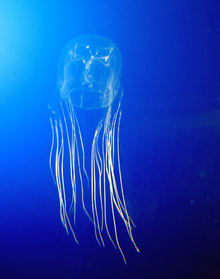

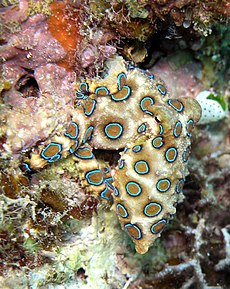
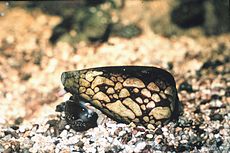

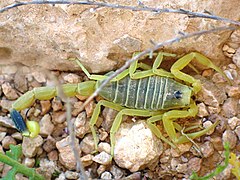
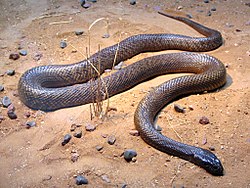

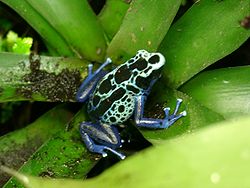











0 comments:
Post a Comment